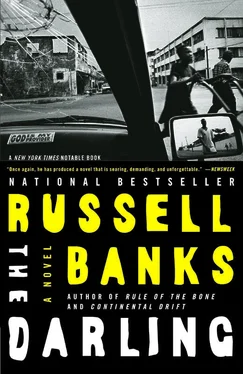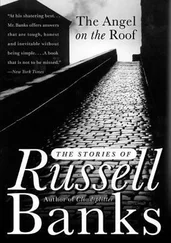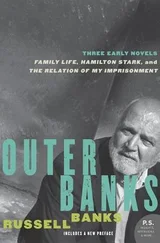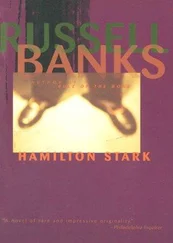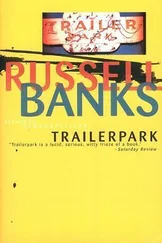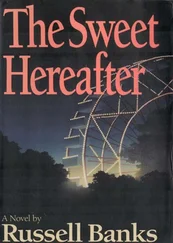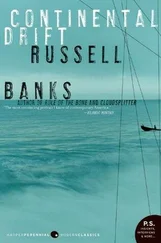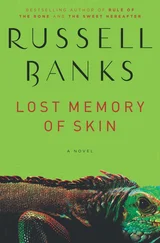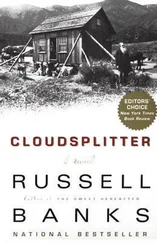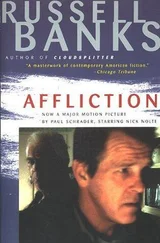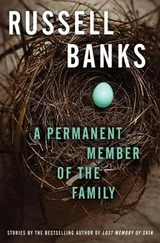Russell Banks - The Darling
Здесь есть возможность читать онлайн «Russell Banks - The Darling» весь текст электронной книги совершенно бесплатно (целиком полную версию без сокращений). В некоторых случаях можно слушать аудио, скачать через торрент в формате fb2 и присутствует краткое содержание. Год выпуска: 2005, Издательство: Harper Perennial, Жанр: Современная проза, на английском языке. Описание произведения, (предисловие) а так же отзывы посетителей доступны на портале библиотеки ЛибКат.
- Название:The Darling
- Автор:
- Издательство:Harper Perennial
- Жанр:
- Год:2005
- ISBN:нет данных
- Рейтинг книги:5 / 5. Голосов: 1
-
Избранное:Добавить в избранное
- Отзывы:
-
Ваша оценка:
- 100
- 1
- 2
- 3
- 4
- 5
The Darling: краткое содержание, описание и аннотация
Предлагаем к чтению аннотацию, описание, краткое содержание или предисловие (зависит от того, что написал сам автор книги «The Darling»). Если вы не нашли необходимую информацию о книге — напишите в комментариях, мы постараемся отыскать её.
is the story of Hannah Musgrave, a political radical and member of the Weather Underground.
Hannah flees America for West Africa, where she and her Liberian husband become friends of the notorious warlord and ex-president, Charles Taylor. Hannah's encounter with Taylor ultimately triggers a series of events whose momentum catches Hannah's family in its grip and forces her to make a heartrending choice.
The Darling — читать онлайн бесплатно полную книгу (весь текст) целиком
Ниже представлен текст книги, разбитый по страницам. Система сохранения места последней прочитанной страницы, позволяет с удобством читать онлайн бесплатно книгу «The Darling», без необходимости каждый раз заново искать на чём Вы остановились. Поставьте закладку, и сможете в любой момент перейти на страницу, на которой закончили чтение.
Интервал:
Закладка:
In those days, Monrovia, the capital, was still lovely, if somewhat bizarre looking, at least to my innocent eyes. Innocent, that is, of Liberia’s odd history. The principal buildings of government — the copper-domed capitol; the bright, white palace of the president; the supreme court building; the treasury building; and so on; each pointed out with obvious pride by Satterthwaite as we drove into the city from the ministry offices on the outskirts — were miniaturized versions of the same structures in Washington, D.C., as if down-at-the-heels country cousins were putting on big-city airs. Bisecting the center of the city, its spine, was Broad Street, its two lanes divided by a grassy, parklike island and bordered on both sides by towering trees. Here, along the meandering ridge of Cape Mesurado — the rumpled, densely populated, yet still green peninsula where the Mesurado River meets the sea — white wood-frame houses with wide verandahs and floor-to-ceiling shuttered windows sprawled behind neatly hedged and trimmed front yards garnished with meticulously tended flower beds. Scarlet, yellow, and pink bougainvilleas sloshed against porch steps and over walkways, and lawn sprinklers carved glittery pale arcs in the sunlight. The wide main streets and sidewalks were free of trash and cleanly swept, and at nearly every crossing a steepled Protestant church kept the faith. Unpaved side streets and rutted alleys cut downhill from the ridge into brush-filled gullies, where, as we passed, I glimpsed clusters of one-room shanties, small shops, and narrow, single-storey shotgun houses hand built from cast-off lumber and recycled construction materials. The neighborhoods of the poor. But the poor did not look all that poor. As if the men had gone off early to steady jobs someplace else, almost all of the people I saw down there were babies, small children, and women neatly dressed in cotton skirts and blouses and brilliantly colored traditional wraps and headdresses, adults and children alike carrying something — water in plastic tubs, baskets of groceries and garden produce, firewood, bunches of bananas, a chicken.
West of Broad and strung along United Nations Drive towards the cliffs that overlooked the sea were the luxury hotels, the Ambassador and the Mamba Point, half hidden behind high walls and palms. Along Broad and for several blocks off it, public and commercial buildings preened, many of them fronted by tall, neo-classical columns — the Liberian national bank and branches of U.S. and British banks, the municipal police headquarters, the central post office, the Rivoli Cinema, a few small hotels, public utilities, and most imposing of all, the yellow-brick Masonic temple. Oddly, the streets and buildings of Monrovia and the overall ambience of the city, despite its size and sprawl and mix of architectural styles, didn’t so much suggest late-twentieth-century West Africa as it did a 1940s sleepy Southern county seat; and the city might have been a set for a sentimental movie about postwar Dixie, To Kill a Mockingbird maybe — except that all the actors in the movie, even the extras, were black.
In their dress and demeanor and comportment, and with their slightly diluted coloration, the citizens of Monrovia looked more African-American than African, which in a sense they were, although I knew nothing of that yet. And it was the bourgeois, small-town African-Americans of the 1940s and ’50s that they resembled, not of the 1970s, certainly not of today. In Monrovia, even as recently as twenty-five years ago, when the good citizens left their homes, they dressed up. The middle-class men wore seersucker or linen suits and neckties and sported homburgs or Panama hats, and the women wore respectable calf-length, flower-patterned dresses and white gloves, and even carried parasols. Their children walked hand in hand in simple, neatly pressed school uniforms. Occasionally, one saw a batch of Liberian soldiers bully through the traffic in a U.S. troop carrier or jeep, and one remembered the Cold War and Liberia’s special allegiance to the U.S. One remembered that the country was our man in Africa, as it were. One saw more heavily armed police officers directing traffic than there were vehicles on the streets; and one noticed cadres of uniformed cops with automatic weapons providing security at the banks and other public and corporate buildings; and one recalled the eagerness with which the three-term president, William Tolbert, and his predecessor, the seven-term president Tubman, both men much admired in Washington, had peddled their beautiful country to foreign investors like entertaining and gracious pimps.
But this was before the bloody coups and the civil war — when the population of the city was still made up almost entirely of civilians. The porticoed homes along the ridge were still owned by the descendants of nineteenth-century African-American settlers, and the people living in the gullies and on the side streets were the descendants of the native Africans the former had displaced, tribal villagers who’d run out of arable land and had come to the big city for work. Down by the harbor nestled the shops and warehouses and homes of the Indian and Middle-Eastern traders and merchants who for decades had been migrating there from Uganda and Rwanda. Everyone seemed to be getting by and getting along. And here and there, striding impatiently through the crowd as if looking for the exit, came the few foreigners, who were white and either in Liberia on business or else attached to one of the embassies — the main one being the American Embassy, pointed out to me by Satterthwaite where UN Drive bent north and east towards the Mesurado River and the bay.
“That the American headquarters,” he said, nodding in the direction of a palatial white estate surrounded by high, razor-wired, cinder-block walls. The Stars-and-Stripes drooped from a flagpole, and a spindly forest of antennas and several large satellite dishes scanned the skies from the flat, palisaded roof of the main building. “CIA, FBI, the Marines — all of ’em in there,” Satterthwaite said, as if to himself, and chuckled. “Busy, busy, busy.”
“Oh,” was all I said. And thought: My country, my enemy .
I knew almost nothing then of the history of Liberia and its deep and abiding connections to my country, my enemy . Piecemeal and from various sources I gradually discovered where I had landed. Liberia is a tiny nation, barely the size of Tennessee and shaped like a thick-bodied lizard, and for generations has given the appearance of being of no newsworthy importance to anyone not actually in residence there. There is fertile land for growing rice and other tropical crops; and rubber, of course, but not much; and beneath the jungle floor a few small caches of diamonds, but hardly enough to sell off or trade away, it was thought. And were it not for the end of the Cold War and, within a year or two, the discovery of a deep and wide vein of diamonds running the length and breadth of the land all the way into Sierra Leone and Guinea, the country might have remained — except to its residents and academic and U.S. State Department specialists — an all-but-forgotten backwater, a misplaced packet of towns and jungle villages and one small city squeezed between its larger, richer, more socially elaborate and cantankerous neighbors on either side, Sierra Leone and Côte d’Ivoire.
To get to the beginning of the modern history of Liberia and to understand its peculiarities, you have to return to the early nineteenth century, when religious, financial, and racial interests in the United States neatly converged over the idea of installing a man in West Africa. In the early 1820s, white Americans, having noticed the presence of a growing number of ex-slaves on the streets of northern cities, began to realize for the first time that they were facing not just a slavery problem, but a race problem as well. And while the first problem was political — merely the price a republic had to pay for the economic advantages of owning a self-perpetuating, constitutionally protected slave-labor force of nearly three million people — the second, the “race problem,” was moral, emotional, cultural, and, I suppose, sexual. Its dimensions were mythic and deeply threatening to most white Americans’ dearly held view of themselves as a morally and racially pure, not to say, superior, people. Besides, the presence of growing numbers of freed black Americans living more or less like white people in cities like Philadelphia and New York was having an unsettling effect on the slave population in the South. Before you knew it, the free blacks would want the vote. Before you knew it, they’d join with the radical abolitionists and in some states would come to outnumber the pro-slavers.
Читать дальшеИнтервал:
Закладка:
Похожие книги на «The Darling»
Представляем Вашему вниманию похожие книги на «The Darling» списком для выбора. Мы отобрали схожую по названию и смыслу литературу в надежде предоставить читателям больше вариантов отыскать новые, интересные, ещё непрочитанные произведения.
Обсуждение, отзывы о книге «The Darling» и просто собственные мнения читателей. Оставьте ваши комментарии, напишите, что Вы думаете о произведении, его смысле или главных героях. Укажите что конкретно понравилось, а что нет, и почему Вы так считаете.
